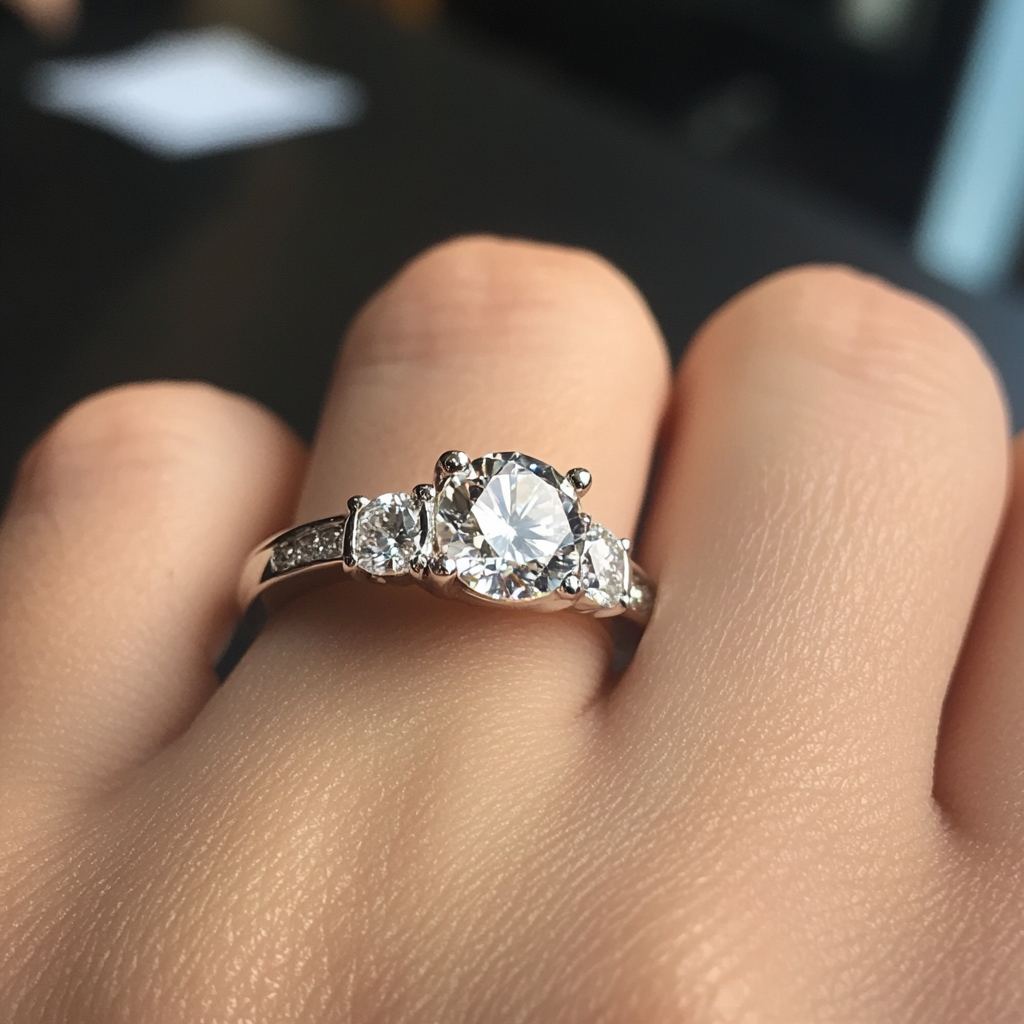300GCP|1304448534|2911362 said:Lightfoot|1304448334|2911360 said:300GCP|1304447694|2911351 said:I think my fiancee is going to have to get glasses for far sightedness. At 40, this is definitely a new problem for him and he said this event has made him realize it's probably getting to be time. Thing is, he already has glasses/contacts but not for far sightedness (which he was definitely wearing every time he looked at the ring), so he is going to need bifocals.
I'm far-sighted and it's very likely that without my glasses, I wouldn't be able to clearly see such a spot. There is now the other issue of how to politely tell the jeweler that he might need some glasses too
I'm wondering if the jeweler knows its there but his definition of "eye clean" is not my definition? My definition is can't see anything from the top with the naked eye no matter how close it is to my face and no matter what the lighting conditions are. I'm not as crazy about what I can see from the side - as long as its not wildly obvious. Maybe he was thinking, as some other posters said, that eye clean means clean from 8-10 inches away?
Uh, that is what eye clean means. There is no industry standard, but the industry average for eye clean is viewing the diamond ~8" away from a top down view with 20/20 vision. What you think it means does not matter, because that is not what the term means. What you want is mind clean. And as such I suggest VS1, probably higher.
WF
"No inclusions visible face-up at a distance of 8-10 inches in natural lighting to a person with 20/20 vision."
BGD
""Eye-Clean" is a term used to describe a diamond which has no visible inclusions to the unaided eye of a person with 20/20 vision at a distance of 8 to 10 inches in the face-up position in natural daylight. "
GOG
"Half an arm’s length in distance or roughly 15” using diffuse/ambient/office lighting and direct/spot lighting and 20/20 vision."
Wink Jones
"No inclusions visible face-up at a distance of 8-10 inches in natural lighting to a person with 20/20 vision"
I don't really need to go on. But here is an article, https://www.pricescope.com/journal/what_eye_clean_diamond........



300x240.png)